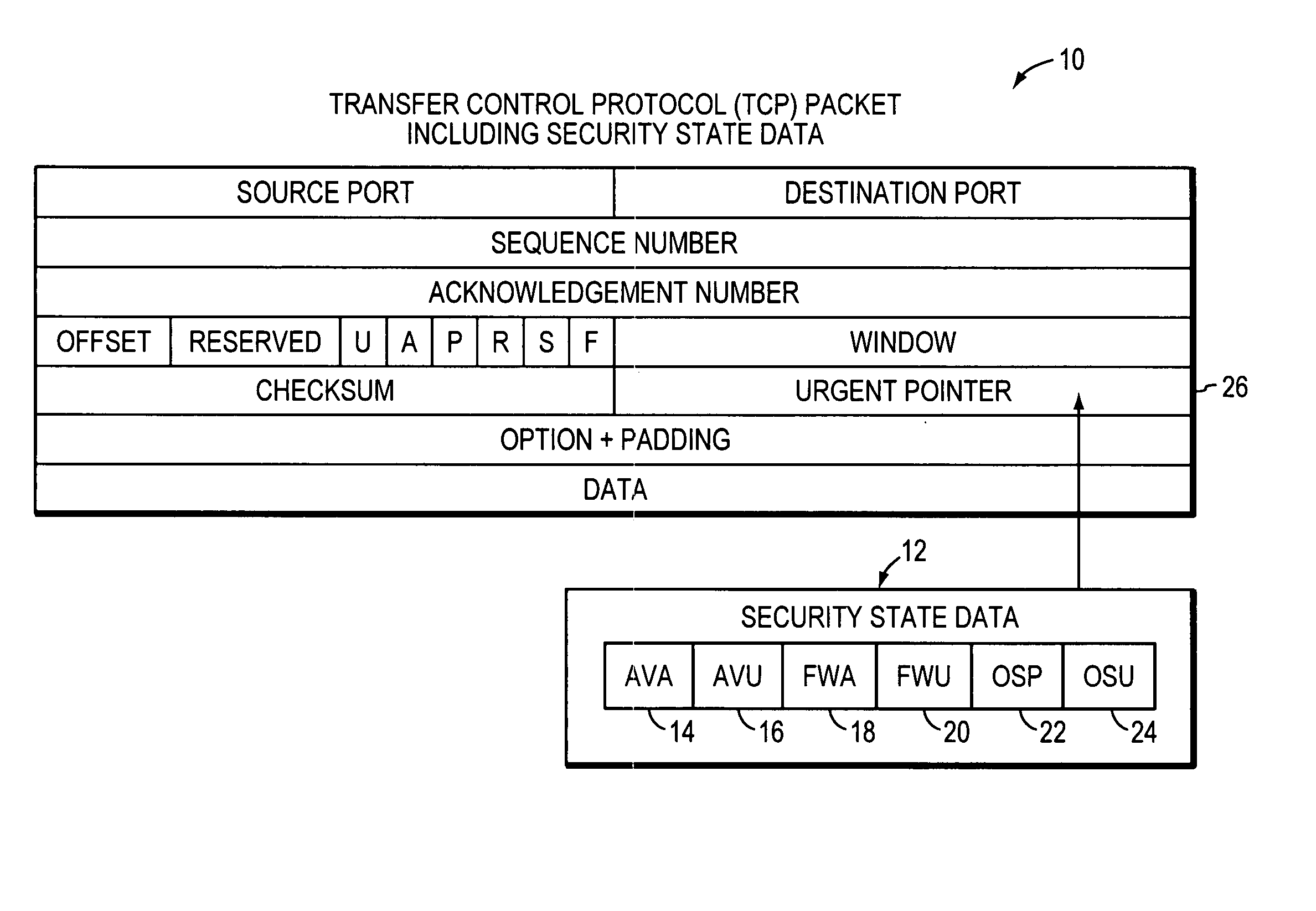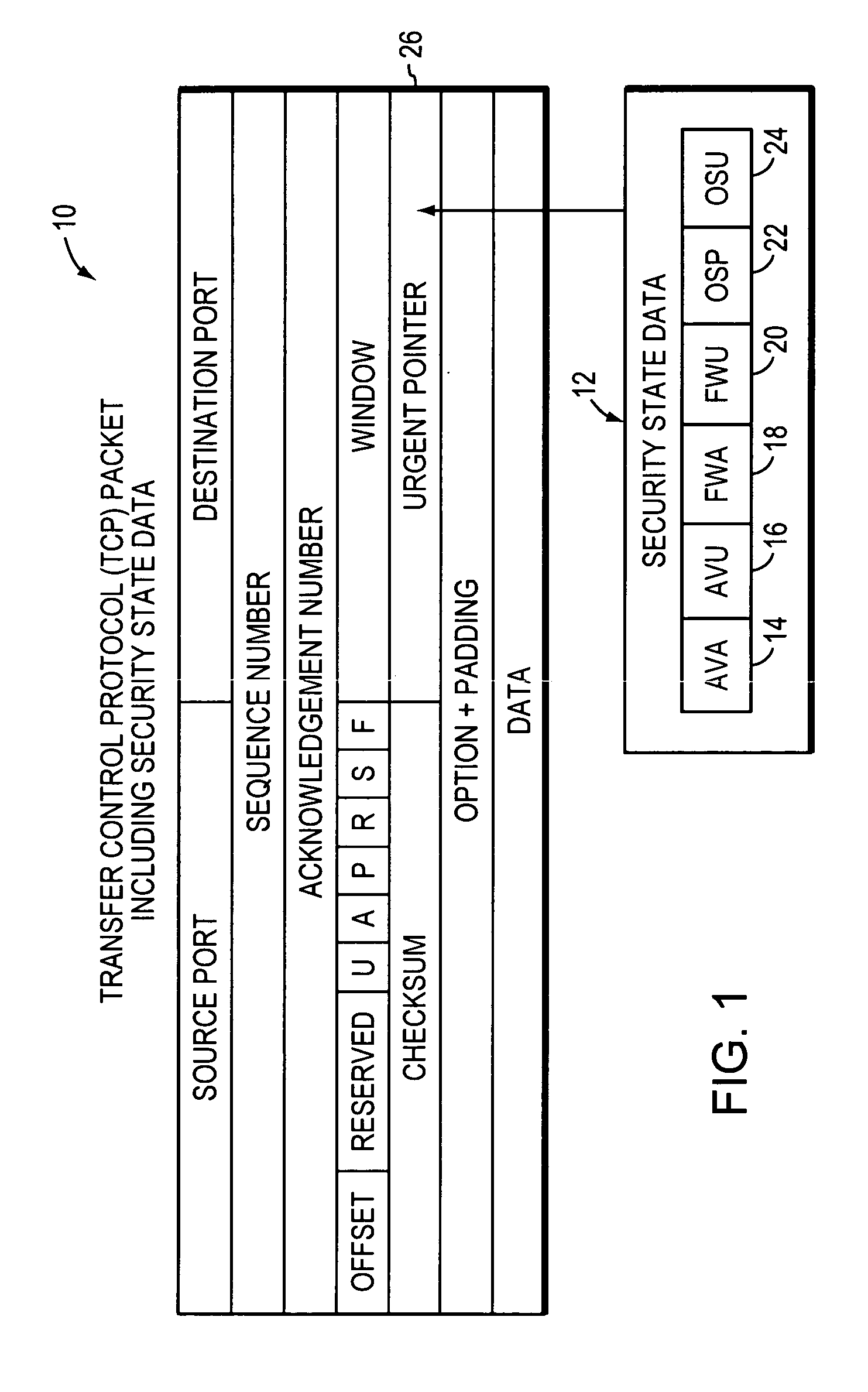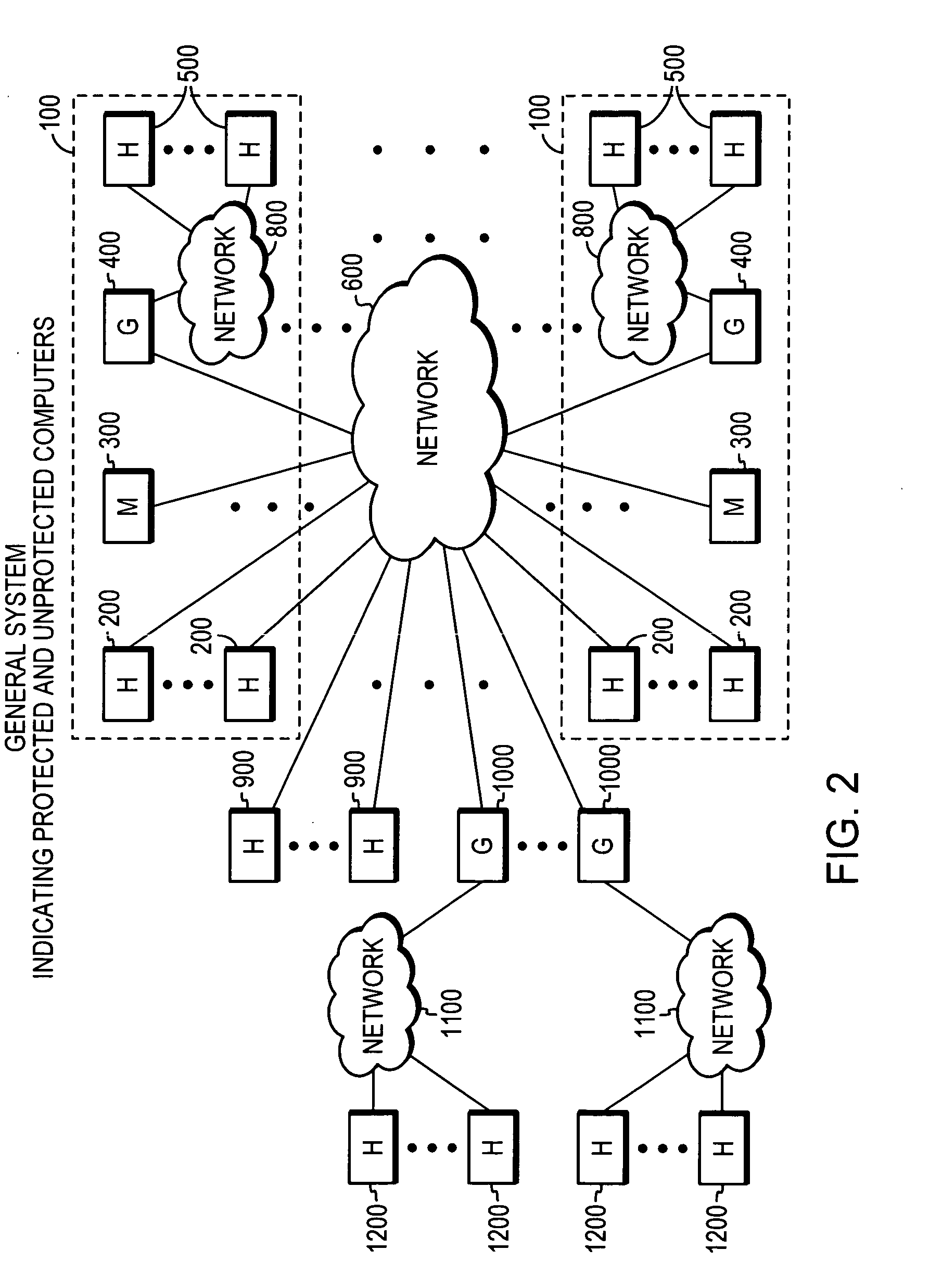System, apparatuses, methods and computer-readable media for determining security status of computer before establishing connection thereto first group of embodiments-claim set III
- Summary
- Abstract
- Description
- Claims
- Application Information
AI Technical Summary
Benefits of technology
Problems solved by technology
Method used
Image
Examples
first embodiment
[0051] In the first embodiment, in FIGS. 3A and 3B, it is assumed that computers 200-1 and 200-x are protected. Each will execute respective security check API 102 upon boot-up to interrogate its anti-virus application 114, firewall application 116, and operating system 118, to determine if each is active and up-to-date. It will also execute the API 102 in the event that a security-related change of any of the applications 114, 116, and operating system 118, is made. It sets the security state data 112, or more specifically, the AVA data 14, AVU data 16, FWA data 18, FWU data 20, OSP data 22, and OSU data 24 according to whether each is active or up-to-date. Thus, for example, the security state data 112 can be six bits in length, with the bits numbered “0” through “5.” Bits “0” through “5” can thus indicate the logic states of AVA data 14, AVU data 16, FWA data 18, FWU data 20, OSP data 22, and OSU data 24, respectively. Thus, a string of data such as “1 1 1 1 1 1” can be used to i...
second embodiment
[0053] In the second embodiment, assume as before that computers 200-1 and 200-x are each protected. The host computer 200-1 executes its TCP stack 120-1 to generate and transmit a TCP SYN packet 10-1a to the host computer 200-x. The host computer 200-x responds by creating a SYNACK packet 10-x and executing its security state inserter 104-x to incorporate its security state data 112-x into the SYNACK packet 10-x. The host computer 200-x executes its TCP stack 120-x to transmit the SYNACK packet 10-x with its security state data 112-x back to the host computer 200-1 via the network 600. The host computer 200-1 executes its security policy enforcer 106-1 to compare the received security state data 112-x with its security policy data 108-1. If it determines that one or more applications 114-1, 116-1 are not active or up-to-date, or that an operating system patch required by the security policy data 108-1 is missing or not active, then the host computer 200-1 executes the security poli...
PUM
 Login to View More
Login to View More Abstract
Description
Claims
Application Information
 Login to View More
Login to View More - R&D
- Intellectual Property
- Life Sciences
- Materials
- Tech Scout
- Unparalleled Data Quality
- Higher Quality Content
- 60% Fewer Hallucinations
Browse by: Latest US Patents, China's latest patents, Technical Efficacy Thesaurus, Application Domain, Technology Topic, Popular Technical Reports.
© 2025 PatSnap. All rights reserved.Legal|Privacy policy|Modern Slavery Act Transparency Statement|Sitemap|About US| Contact US: help@patsnap.com



